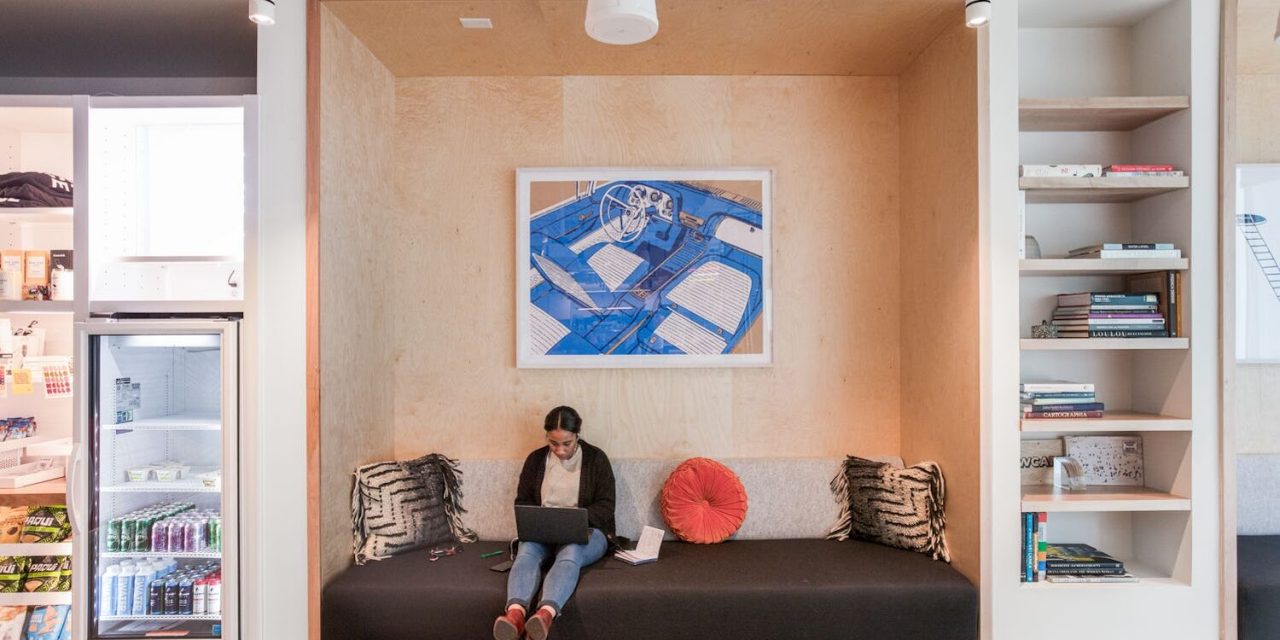In the coworking industry, building a strong brand identity is key to success. When you know what you stand for and showcase those values consistently, you can attract prospective customers who believe in the same values. The result is that you build brand loyalty.
So, how exactly should you showcase your coworking space’s brand identity?
Although there are many marketing forms you can use for this, branded content is perhaps one of the most effective. With branded content, you showcase your values without directly promoting your brand. Branded content creates a story your audience can enjoy. This makes the content easily shareable.
But how exactly do you build your coworking space’s brand identity and promote it through branded content?
Let’s dive into everything you need to know in this blog post.
Define Your Coworking Space’s Unique Selling Proposition
To develop your coworking space’s brand identity, you need to define your unique selling proposition (USP).
Your USP is what sets your office space apart from the others in the market. To define your USP, ask yourself what you do well and what customers want from you. Your answers could be anything from your modern offices, your type of community, or amenities.
So, what do these USPs look like for coworking operators? Let’s look at two examples. Regus’ USP, for instance, is simple: It allows individuals or small companies to book spaces as they need it. Impact Hub’s USP, meanwhile, is that it also acts as an incubator. So, in addition to providing physical spaces for work, Impact Hub introduces business owners to investors, partners, and so forth.
If you already have your USP developed, then great! If you don’t have it yet, the good news is there are tools you can use to identify it.

A content generator like Ask Writer, for instance, can help you define your USP after you insert the right prompts. Just refine the output once you have it.
Identify Your Target Audience
Once you’ve defined your USP, the next step is to identify your target audience. Your audience, to an extent, determines your brand voice and visual identity. These are the components that comprise your brand identity as a whole.
To identify your target audience, go back to your USP. Then determine which sector will benefit the most from your edge.
For instance, Regus’ USP is its flexibility. Since flexibility is a feature practically everyone who’s working wants, Regus’ determined a target audience that’s rather broad: small and large businesses and even freelancers.
Impact Hub’s USP is its incubator function. So, its target audience can be classified into two: budding entrepreneurs and progressive institutions.
If you can’t define your target audience, it helps to send out surveys. Just ask specific sectors whether your key differentiator is something that will benefit them. If they say yes, consider them part of your target audience. They are potential customers, after all.
Develop a Brand Voice and Visual Identity
Once you’ve defined your USP and target audience, the next step is to develop a brand voice and visual identity. Your brand voice is the tone and personality of your coworking space’s brand. Your visual identity, meanwhile, is the way your brand looks.
As components of your brand identity, both brand voice and visual identity can help build, not just brand recognition, but also brand trust. After all, your audience perceives the values that resonate with them through these two components. Why is building trust important? Trust is important because 46% of US consumers pay more for brands they trust.

So, how do you create your brand voice and visual identity?
Go back to your unique selling proposition and defined target audience. Then determine the visual elements and language tone you’ll use that are aligned with those. Let me give you an example.
We’ve determined Regus’ USP is its flexibility, and its target audience is composed of small and large businesses and freelancers. If you check out Regus’ visual identity and brand voice, you’ll see the brand takes these into consideration.
Check out the well-known coworking brand’s logo:

Notice the use of rounded typefaces and the circle that connote flexibility. The logo also uses a primary color (black) that’s neutral. It’s an attempt at reaching out to its broad target audience.
Regus also takes into account its USP and defined target audience in the other visuals it uses. Check out this image on its Facebook account:

Notice the use of young and older models. Check out the different work settings (couch vs. ordinary chair; circular tables vs. rectangular tables) that highlight the flexibility value, too.
If you look at Regus’ brand voice, you’ll see the USP and target audience are taken into account, too. See the neutral tone of the social media copy below and the use of the word “flexibility” below:

Once you’ve determined your brand voice and visual identity, create a guiding document that specifies your brand’s final attributes. The goal of the document is consistency across marketing messages.
This is important because consistency is crucial in B2B, e-commerce, B2C or SaaS marketing, since it leads to brand recognition.
Here’s an example of this type of guiding document you should create:

It’s also a good idea to include examples, both visual and written, in your guide.
Create Branded Content That Showcases Your Coworking Space
Now that you know who you are as a brand, all you need to do is create branded content.
Note that branded content differs from the other types of content. As I mentioned earlier, with branded content, you don’t sell your product directly. You create a story. The goal is to build that emotional connection with your audience. So, in the end, they’ll promote your content and, in the process, your brand identity.
Make sure your branded content has the brand voice and visual identity attributes you specified in your document. Here are other tips you should follow to create branded content:
– Show, don’t tell: Don’t just say “we are committed to helping budding entrepreneurs connect with progressive organizations.” Show it through images, videos, etc.
– Appeal to the emotions: Make your audience smile, cry, or laugh.
– Showcase real people who embody your values.
Impact Hub is an example of a coworking space brand that creates excellent branded content. For Earth Hour, the coworking space came up with a feature that highlights what people can do for the environment if they work together:

The branded content published on its Instagram account showcases Impact Hub’s identity in many ways.
If you watch the video, you’ll see there are many takes of people working together. This is consistent with Impact Hub’s USP (it’s an incubator that connects people) and highlights the coworking space’s emphasis on the value of collaboration. The copy is consistent with Impact Hub’s brand voice, too. The language used is empowering.
Promote Branded Content
People are more likely to share your branded content and promote your brand identity in the process. It’s great content, after all. But that doesn’t mean you should leave your audience to do the work.
Promote your branded content, too, on your other marketing channels: your website, other social networks, email newsletters, among others.
You can even use social media advertising to reach a wider audience, collaborate with influencers and partners to amplify your message.
Make sure you track your results and adjust your strategy as needed. You want to optimize your content’s performance so that it keeps reaching the right people.
Conclusion
Crafting your brand identity and promoting it through branded content is a a great way to differentiate your coworking space from the others.
You learned how to do this in this article. Define your USP, identify your target audience, and develop your brand voice and visual identity. Then create your branded content that showcases your identity and promote it.
Follow these tips and you’ll reap the best results. Good luck!









